Introductory note
Please bear in mind that these impressions, observations and pictures come from prototype hardware and software. As such they should be seen as indicative only, we will have to wait for production hardware and software before drawing any final conclusions.
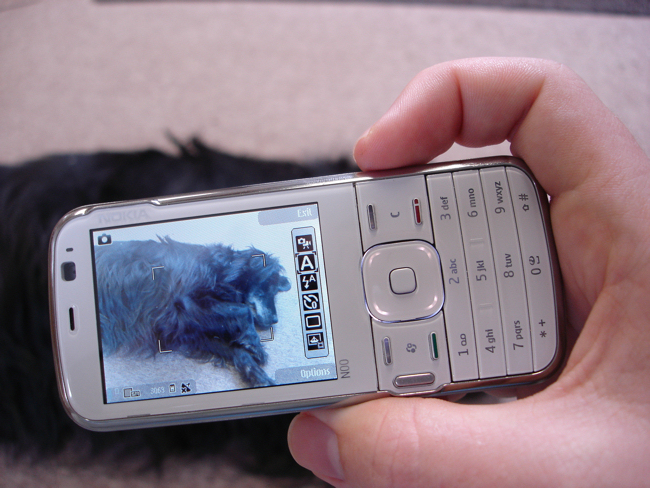
Design
The N79 has a markedly different design and style compared with recent Nseries. It has a more colourful, vibrant and playful style than the understated elegance of Nseries devices like the N78. This reflects the fact the phone is targeted at a style conscious audience. The use of bright, colourful and contrasting materials, a rotated Nokia logo and Xpress-on covers all combine to give this overall impression.
The most immediately noticeable part of the design are the twin protrusions on the lower left and upper right of the device. These look rather ugly in most photos, but it's deceptive - the N79 is one of those phones that looks much better in reality than in photos. Indeed the protrusions add character to the device without getting in the way. Personally, I'm impressed by the N79, I prefer its design over the N85 - although, of course, such judgments are very subjective. It feels like the phone has a personality. Usually such phones put form over function, but in the case of the N79 I think the design team got the balance just right.
The front of the device is made of a hard, glossy white plastic; fingerprints show less than on darker devices. The side of the device is made of hard, durable plastic with a dulled silver sheen. In common with the N85, the N79 has rounded edges and the sides of the device slope inwards; this helps the handset feeler smaller than it actually is. The same trick has been used very effectively in the Eseries range, most notably with the Nokia E51 and E71. The back of the device uses the same 3D 'adzed' plastics as other recent Nseries devices. The whole back portion can be removed - it is an Xpress-on cover (see more on this below).
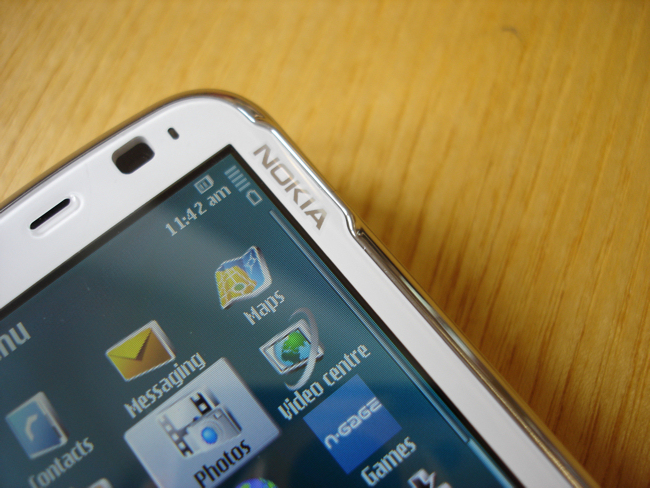
Build quality on the N79 was good, but we need to wait for final firmware before making any judgments. I was particularly impressed by the quality of the buttons around the edge of the handset - something of a weak area in previous mid range S60 handsets. The screen is 2.4 inches in size, this is the same as the N79 and N82, is 0.2 inches smaller that on than the N85 and 0.4 inches smaller than the N95 8GB and N96. If you're used to using a device with a bigger screen it may feel a little small at first. Thanks to the built in accelerometer, there is automatic screen rotation (disabled by default); we've seen this feature in higher end handsets, but this is a first for a N7x series handset. It's a good addition to make, landscape orientation becomes a more practical proposition when you can switch back and forth quickly.
The N79's control cluster and keypad are small in area; this is always a drawback for smaller candybar form factor devices. However, it is not as bad as it looks and is better than the likes of the N82 and N78 thanks to some clever design touches. The multimedia key has been moved to the left hand side of the device and rotated 90 degrees; as a result, you are less likely to hit it accidentally and the rest of the control cluster is less cramped.
Both the softkeys and send/end keys are raised from the flush surface, the S60 and cancel key sit in between, on the right and left hand side respectively. Raising these keys makes it much easier to use the keypad without looking at it and reduces mis-hits. The number keypad makes full use of the limited space available, there is good spacing horizontally, vertically things are a bit tighter, but this is partially offset by having physically separate pieces of plastic for each row (in contrast to one piece keyboards, as on the N85). Text entry speeds should comfortably match or even exceed those of the N73 and N78.
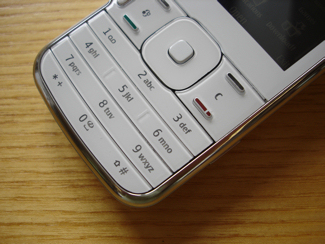
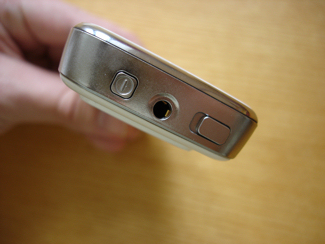
On the left hand side of the device there's the power port (slightly awkwardly located) and a hatch hiding both the microSD card slot and the microUSB port, while on the right side there's the familiar arrangement of the camera capture key and the volume rocker. Twin stereo speakers sit on opposite ends of the right side of the device - they're reasonably loud, although they don’t quite match up to some of the higher end devices. The top of the device has the power button, a 3.5mm audio jack (also used for TV-out), and a key lock slider button (much more convenient than using the keypad shortcut).
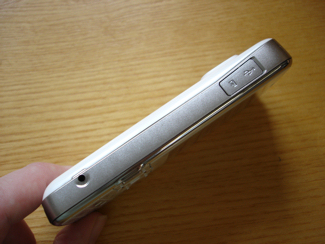
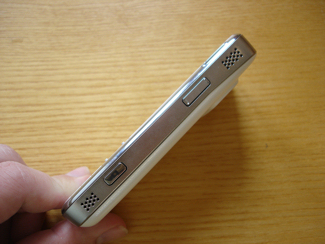
The back of the N79 houses the 5 megapixel camera, which is accompanied by a dual LED flash. The camera lens is protected by a sliding lens cover, similar to that found on the N85. As you would expect, opening the lens cover starts the camera application. General camera performance is good, with a decent start up time and little or no shutter lag, and good shot to shot time. Camera results were very good, similar to Nokia's other five megapixel devices. The N79 can also record video at VGA resolution at 30 frames per second, with the quality being similar to that of the N95 and N85.

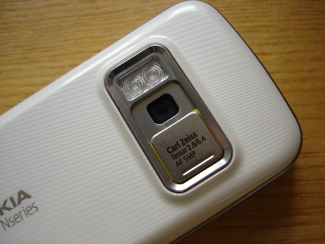
The dual LED flash is not quite as strong as on the N85 (different micro-optics), but will comfortably out perform single LED flashes, as used in the Nokia N95 and N73 (see also a full list of which devices have which camera flash specs). Xenon flashes, such as those found on the Nokia N82 and Samsung G810, will usually out-perform a dual LED flash, as results are generally much sharper. The lesser illumination of a dual LED is more noticeable when the subject is further away - conversely, the difference for close-up subjects is less marked and, indeed, the dual LED can sometime be better thanks to its softer lighting. A key advantage of the dual LED flash is that it, unlike an Xenon flash, can also be used for illumination during video recording.
Smart Xpress-on covers
The N79 sees a return of the popular Xpress-on cover. However, the N79 adds an extra trick to this personalisation favourite. There's a small chip embedded in each cover which lets the phone know when a cover has been changed. When a new cover is placed on the phone the theme will automatically be changed to a matching colour. It may seem a bit gimmicky, but I suspect this feature alone will sell a lot of N79's; the importance of personalisation can not be understated.
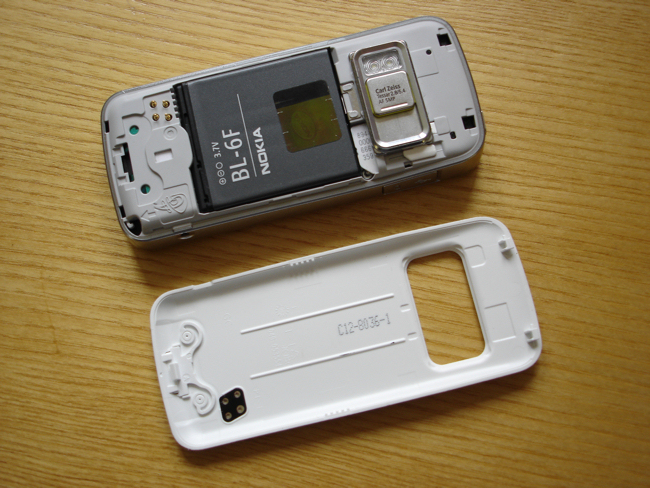
At launch there will be around 10 colours available and a selection of three of these will be put into each retail box. I imagine third party accessory manufacturers will quickly jump on the bandwagon too, although they are unlikely to support the smart chips.
N79 - a compact package
With dimensions of 110 x 49 x 15mm (74cc), the N79 is the smallest Nseries so far, although not by very much - the N78 is a few mm bigger at 113 x 49 x 15.1mm (76.5cc). However, a bigger difference can be observed when compared with the N82 (112 x 50.2 x 17.3mm, 90 cc), the N79 is about 18% smaller in volume and is also considerably lighter at 97g, compared to 114g. That's an impressive achievement given that it has been less than a year since the N82 was announced.
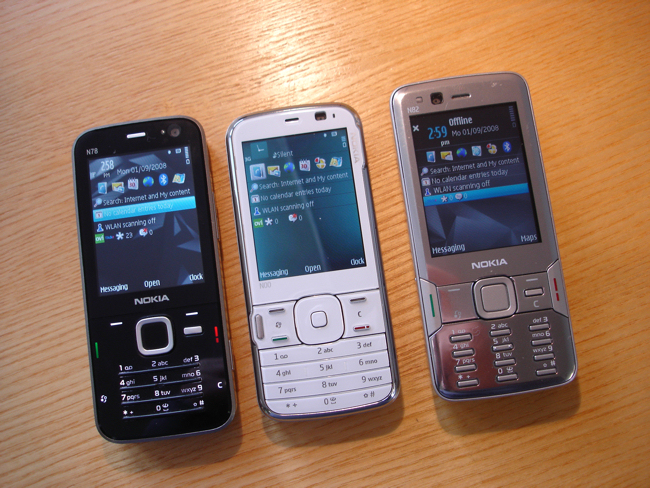
N78 versus N79 versus N82
Even with this size reduction, the N79 is not Nokia's smallest 5 megapixel camera phone, that honour still resides with the 6220, but the difference is largely due to the smaller screen size of the latter. The 6220 Classic will still be the choice for the budget conscious who want a 5 megapixel camera phone, but the N79 does start to encroach on its market position. It is probably fair to say this is part of a general trend that sees Nokia differentiating less through hardware specifications and more through software and design.
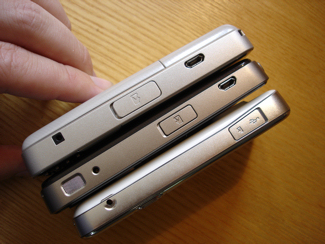
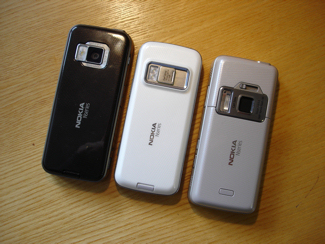
1. N82, N78, N79 on their sides. 2. N78, N79, N82 face down
It is impressive what's been packed inside the N79. In addition to what we have already mentioned, there is the GPS (aerial at the top of the device), WiFi and Bluetooth chipsets, an FM transmitter (sending audio out of the device) and FM radio (with RDS support).
N78 and N79
The release of the N79, so soon after the N78, has raised a few eyebrows. The N79 boasts an upgraded camera, 5 megapixels and a dual LED flash, and also adds an accelerometer. At the same time, they share the same size and form factor, have the same launch price and have a similar software suite. Isn't it a bit strange for Nokia to announce what, at first glance, looks like a replacement for the N78, just 6 months after it was first announced? It is a perfectly reasonable point to make, but it is also an over-simplification.
More than anything else, the N78 and N79 comparison is illustrative of how quickly the mobile world moves. The product development cycles of the two phones have 6 months separating them - and apparently this was enough to be able to upgrade the camera and add an accelerometer. Relatively speaking, these are small changes that could easily be the result of falling component prices or an engineering innovation that saved space somewhere else. Given the pace of innovation that we've seen in the last 5 years, it is par for the course from an engineering perspective.
From a business and marketing perspective it is less clear cut - the N79 will cannibalise sales of the N78. But again it is about the speed with which the mobile market moves - Nokia needs to keep up with its competition. In this light we might see the N78 as the entry level Nseries for the second half of 2008, whereas the N79 ss the additional entry level Nseries for the first half of 2009; importantly, both will be in position for the crucial Christmas market. If anything, it should be a surprise it has taken this long for Nokia to create diversity in the N7x range after the blockbuster success of the N73.
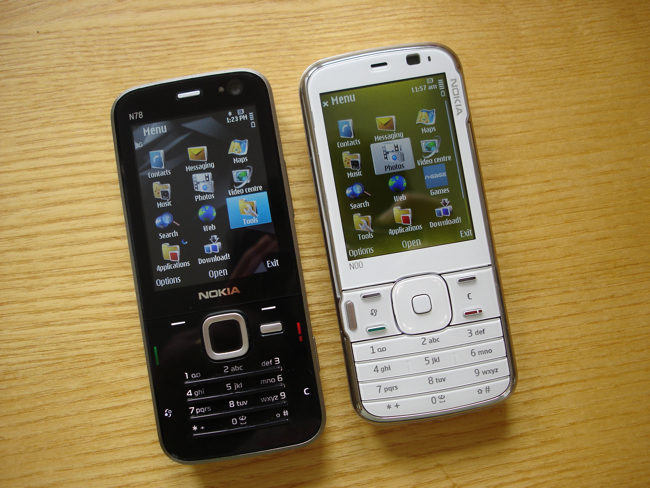
It is also important to appreciate that the N78 will likely be some 50 Euro or so cheaper than the N79; this is around 15-20% of the total cost. Many consumers will be perfectly happy with the specifications of the N78; some will see the extra cost of the N79 as unwarranted. Moreover, the difference between a high quality 3.2 megapixel camera and a 5 megapixel camera really isn't that big. Therefore we might see the differentiation between the N78 and N79 as being far more about design than hardware specifications. Most importantly, for many, the the appeal of the N79 will have nothing to do with camera specification and everything to do with the ability to personalise it with Xpress-on covers. The N78 and N79 are more different than a cursory glance might suggest.
Software and Ovi on board
The N79 runs the Nseries edition of S60 3rd Edition Feature Pack 2. The core software is the same as that found on the Nokia N78, although there are updates to Ovi services (see below). You can read our N78 review (part 2 and part 3) for more details on the basic software.
It's been a year since Ovi was first announced, but it's only now that the first stage is really starting to mature. The N79 will be one of the first phones to ship, from launch, with a complete set of the first round of Ovi services. Nokia Maps will appear in its 2nd version, the full N-Gage client (and preloaded games) will be available out of the box for the first time, there's also the Photos, Music Store, Share online and Video centre applications. Collectively these form a wide-ranging service suite that cannot be matched by any other manufacturer.
However it is still early days in some senses - the other two legs of Ovi are still incomplete. On the PC side, the N79 will ship with Nokia Photos, but side loading of music will still be through Nokia Music Manager rather than the, currently in beta, Nokia Music client. On the web side, N-Gage, Share on Ovi and the Music store are in place, but there's work to do on Nokia Maps. Moreover the services still stand in relative isolation - there's no central portal or integration between the disparate services. There's also the need to continue to evolve and improve existing implementations across all three channels. We know this is going to improve in time, but the out of the box experience will still be relatively disjointed for the average consumer.
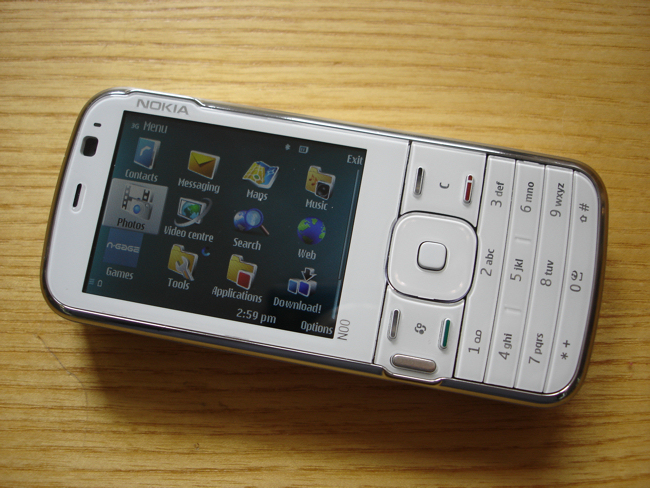
Concluding thoughts
Looking back 2 years to the launch of the N95 we see a handset with a 5 megapixel camera and integrated GPS, switch to the present and we see the same specification in the N79. The difference is the N95 was a a high-end, cutting edge handset; the N79 isn't cheap, but it is much more main stream. It is also a great illustration of how the mobile market evolves - and it makes you wonder where we might be in two years.
In the last week it most of the media attention has been focused on the N85. The thing is that while the N85 had grabbed the headlines thanks to its position and hardware innovations, the N79 is, arguably, the more impressive achievement. It is hard to point to any one reason for this conclusion, rather it is the overall package that impresses. Yes, there are more powerful phones available; yes, there are cheaper phones available; yes there are more stylish phones out there. But combing all three of these factors together into one equation sees the N79 emerge as a very interesting contender. To my mind, it has that x-factor that seems to mark out successful handsets.
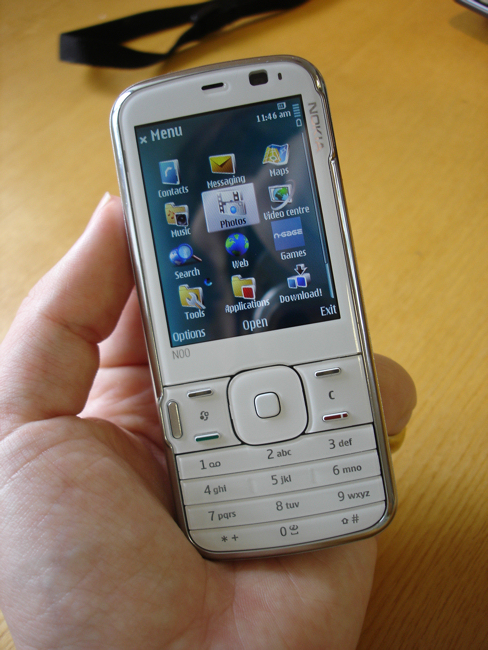
Rafe Blandford, All About Symbian 2 Sept 2008
See Also
News item: Nokia N79 - Nseries with style and features
Gallery: Nokia N79 (including larger resolution versions of the images used in this feature)
